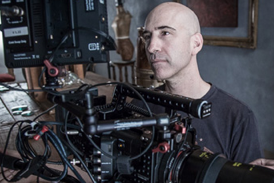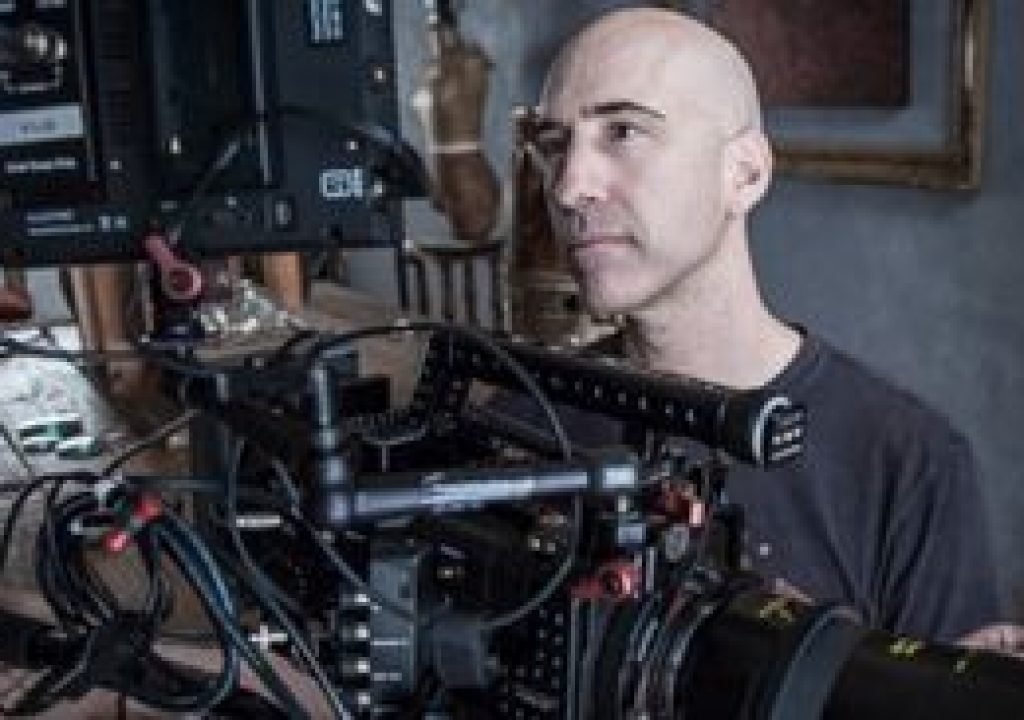
We talked with August about his career and his participation in the upcoming Big League CineSummit, where he’ll be presenting ““How to Create Cinematic & Dramatic Lighting”. August will be breaking down the step by step process he goes through while detailing the instruments and the techniques that are crucial to achieving powerfully dramatic images.
ProVideo Coalition: You’ve worked for everyone from Merrill Lynch to Xbox Kinect, and I imagine you have to adjust your style for each. Is that something you need to make a conscious effort to do, or does it happen naturally?
August Bradley: It’s certainly a different mindset when working for a client than doing a personal project that you’re initiating and have full control over yourself. I go into commercial projects with the understanding and mindset that I’m there to deliver for the client’s needs, not mine.
But they hired me for a reason and they saw something about my work that made them think I’m right of the job, so there is some aspect in my style, taste, and technique that they wanted in this project. It’s important to ask a lot of questions up front and understand what it is that they saw in my portfolio that attracted them to me for the project.
And clients are always eager for suggestions and input on the project. They want the artist to contribute, to shape it and give the results a wow factor that the specs, comps and client briefs always lack. There can be a very sound and fully developed idea, but the execution has to give it the magical spark that will make viewers of the final work get excited about it. And this artistic spark usually comes from something personal within the creator (or team of creators).
On the other hand, my personal work is all an expression of my taste and curiosities and is focused on areas I want to explore. Often in the personal work, after it’s done, when you look at it and reflect, you discover things about yourself you weren’t even aware of when you set out to do it. The personal style comes through as a reflection of your personality and the culmination of your life experiences.
After your success at the past few Fashion Week presentations, your team is busy creating cross-media collections for gallery and museum exhibitions among other projects. Can you give us any details around what you’re working on?
Most recently I launched the project entitled “A Theater of Darkness”, a creative collaboration featuring the nouveau cirque performance troupe Lucent Dossier. This is a cross-platform experience with an exhibition website serving as its hub (www.TheaterOfDarkness.com) with film, photography, music, and poetry — plus touring physical exhibition events.
I also just finished shooting a film at an NGO orphanage in Kampala, Uganda and with that did a “Faces Of” portrait series. A few years ago I did a documentary portrait project, “99 Faces of Occupy Wall St.” (www.99facesofoccupywallst.org), which took on a life of its own and got insane media attention around the world. I loved having done something that was part of a larger conversation and addressed important social issues.
So I’ve been looking for another opportunity to do something on the documentary front and when the opportunity came up to work with the orphanage in Uganda, I knew this would be it. The Uganda portrait series project has been an incredibly moving experience for me.
I’m also working on short films for the festival circuit and gallery installations, and music videos with musical artists that I love. I did my first one recently with the band KORN (http://www.behance.net/gallery/KORN-Music-Video/13054159), and it was so much fun. I just loved it, so am now doing more, though they’re in development and not finished yet.
Do you feel you’re able to be as creative as you want to be in your commercial work? Or do you save some of that for personal projects?
On commercial projects I’m there to deliver for the client. I love shooting commercial gigs and they enable me to sustain a career in the field that I’m most excited about. And I do tend to end up working with clients that want a high level of creative input from me as the artist, more so than what I hear from peers in many of their experiences. I suspect that’s because my portfolio reflects a very creative approach.
Of course I have more creative freedom on personal projects. But I also love shooting client gigs, I love shooting anything — I just love what I do. So I’m happy with the trade off and always have a balance between commercial and purely artistic endeavors. It’s such privilege to do what we do, I’m happy when clients give me the opportunity so if we have a creative difference I want to make it work for their needs. On my own projects I obsess over and control every little detail, with the help of my incredibly talented team.
My career has taken so many different twists and turns. I grew up in my mother’s photography studio, then went on a very different path. I attended Harvard Business School then had a career doing marketing strategy with leading consumer brands. Eventually I needed to come back to the creative side so started working as an advertising photographer. From that I got into art photography.
My work even at the beginning was highly conceptual. Having had a background and network with apparel brands, I ended up shooting a lot of fashion right away. That led to more conceptual ad campaigns and then art exhibition opportunities. There has always been a big aspect of drama and even a fantastical element to much of my work, so in that sense I’m still working on the kinds of projects I set out to at the start.
But I did not anticipate working in film, music videos, and commercials. Those opportunities came a as a result of my photography success. And now moving into feature film and tv production, it’s a very exciting time. Next I want to further push the boarders of cross-platform storytelling.
What’s one piece of practical advice you would give to cinematographers?
Study all kinds of art and pay very close attention to light in every instance — in the real world, and in the artwork you love. You can learn about light almost anywhere. How does it fall across a face in widely different environments? How do different surfaces reflect light differently? How does the lighting change our emotional reaction to a person or environment. Study light intensively.
You’re going to be participating in the next Big League Cine Summit. What attracted you to the event?
I love the caliber of the people involved and the dedication of the team that created the series. I also love the enthusiasm the attendees and their drive to learn and excel.
Creating Cinematic/Dramatic lighting is one of the topics you’re set to discuss. How can an intelligent approach to this kind of lighting change a project?
We do not actually see objects, we ONLY see light reflecting off of objects (literally bouncing off them). So how the light interacts with a subject will define our perception of it. When we watch the world around us, the light will entirely shape our visual perception of a person, a scene, or an event.
So if you can learn to control and deliberately guide the illumination, you will have tremendous control over what you are presenting to the audience. This control gives you the ability to tell more powerful, and more deliberate stories.
What’s the best way to follow you?
www.AugustBradley.com
www.twitter.com/augustbradley
www.facebook.com/augustbradley
www.google.com/+augustbradleystudio

